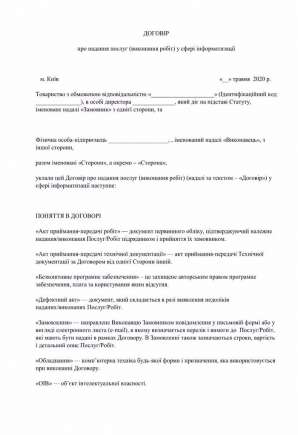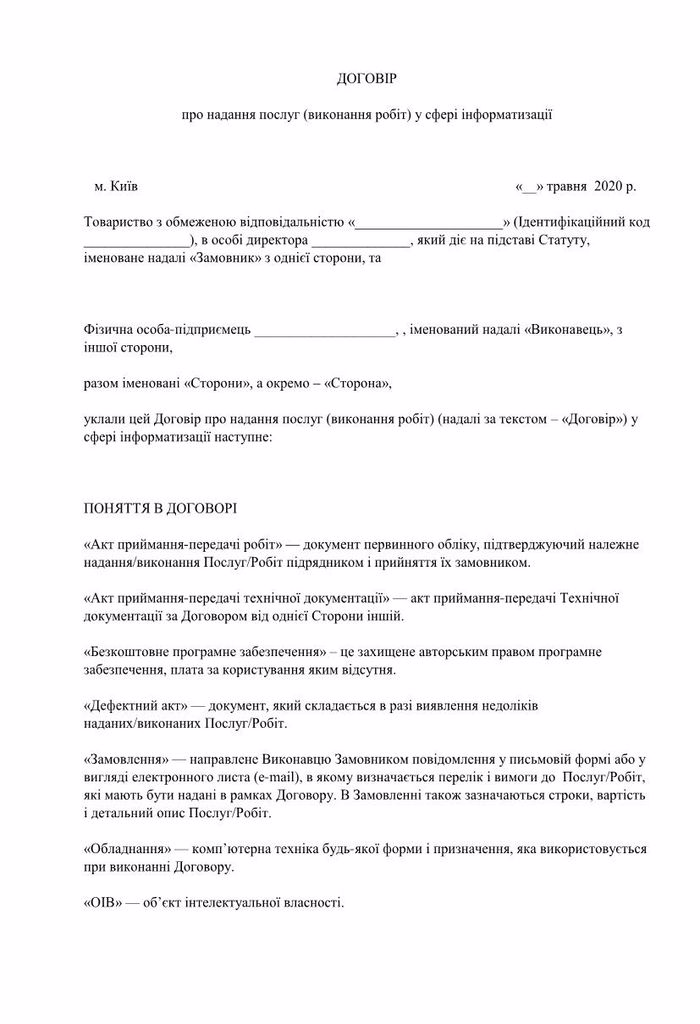Payment calendar of IT companies in Ukraine: how to organize it and what will it give?
Cost of services:
Reviews of our Clients
... our work on joint projects assured us of your high level of professionalism
The payment calendar is one of the tools of financial planning and cash flow analysis, which helps to:
- avoid cash flow gap;
- manage cash on a daily basis;
- effectively use "free" cash;
- monitor the timely settlement of foreign trade transactions.
Company owners, including IT businesses, spend 90% of their time on its development. If the owner does not have an assistant or a person to whom he could delegate financial tasks, they are solved as they come in. This can lead to some financial surprises or collapses (late payment to contractors/payment of taxes, late receipt of foreign currency earnings, the inability to pay salaries due to lack of money in the account, etc.).
Cash flow planning allows the owner to avoid such financial collapses.
The main tasks of the payment calendar are as follows:
- avoiding cash gaps that lead to untimely payments to contractors, employees, and the budget;
- preventing the expenditure of funds above the approved plan (even if there is a balance in the current account);
- managing the company's liquidity.
The introduction of cash planning in the company allows the owner to:
- calculate business costs (and optimize them if necessary);
- review the pricing policy for services;
- take measures to prevent cash gaps;
- negotiate with clients about payment deferral.
The effective work of the payment calendar is impossible without the procedure for approving and making payments. This procedure is the basis of the payment calendar process, which is developed in several stages.
You may also like: Indexation of IT Companies Wages in Ukraine
What is the purpose of a payment calendar and what the lack of it can lead to?
Using the example of one of our clients, we will explain how to develop a payment calendar. The customer (owner of an IT company with its own R&D, sales, and accounting department) requested our help in developing a system of payment approval and analysis.
The problem of the client was as follows: employees from all departments of the company contact the accounting department, chaotically, during a month with the request to pay the costs (in most cases all need to pay "urgently"), accountants make payments, breaking off from the scheduled tasks, and also chaotically asking the management to approve the payments. The process is endless, inconvenient, and unautomated.
As a result, the lack of a payment procedure leads to:
- cash gaps caused by the lack of a schedule of cash inflows and outflows;
- lack of simplicity and clarity in managing cash flows - the owner does not understand which payments to approve as a priority, whether there is free money for new projects, etc;
- cases of late payment of taxes and wages;
- lack of internal payment culture (company employees put off preparing documents for payment because they know that at any moment they can say "payment is urgent")
- other problems related to the specifics of the company's operations.
Our experts offered the owner a fairly simple and effective solution to his problem - the introduction of payment procedure and payment calendar.
You may also like: Individual Entrepreneur vs Gig-Contracts in IT. Which to Choose?
Stages of developing a payment calendar
1. Development and approval of the payment procedure
The essence of the process is to transfer the work with payments to applications with a limited scope of approval and payments. The initiator (company's employee) submits a payment request.
Note: the request must contain the description of payment - what client, how much, and its purpose.
Applications are processed by the management twice a week (on Tuesday and Thursday). The request can be refused or approved. Approved requests are processed (paid) by the accounting staff after approval by the management (similar to approval, 2 times a week). Exceptions may be urgent requests as directed by the owner.
Rejected requests require additional explanation to management about the direction of spending or other reasons for rejection (specified in the comments to the applications).
2. The cash plan
The payment calendar is based on the planning of cash inflows and outflows. Often, the payment calendar is formed for a month or two with further adjustments to the data of the bank statement.
Planning requires the following information:
- sales plan and days of debt repayment (in the context of delivery terms and payment deadlines, types of sales);
- procurement and expenditure plan (in the context of expenditure items, delivery terms, and payment dates);
- payroll and vacation plan (by payment dates);
- tax payment plan (by payment date).
Given that our client provides IT services, he had technical tasks with clear deadlines for work and payment to contractors. This information helped us to reduce the time to prepare planned amounts of income and expenses.
To approve the payment calendar model by our client, we developed an Excel prototype, which later formed the basis of an automated payment calendar.
The Excel prototype contained information (for each day) about:
- cash balances at the beginning and end of each day;
- expected cash inflows from the sale of services (including customer prepayments);
- expected cash expenditures to purchase assets and cover expenses (including current expenses, salaries, taxes).
The payment calendar, made according to our client's planned data, immediately showed cash gaps within the month (which did not affect the final cash balance).
Our specialists suggested reconsidering the terms of payment for expenses and agreeing with the suppliers to postpone payments for a few days. But, clients do not always agree to grant deferred payments. In such cases, the business can use such financial services as:
- overdraft - the so-called credit limit for the company, which allows covering the cash gap (the company can make a payment in an amount higher than the balance of funds in the current account, and when the current account receives an inflow of funds - it will cover the excess difference);
- refundable financial assistance - a company (under the general tax system only) or an individual provides money on an interest-free basis.
3. Payment calendar automation
Based on the approved payment calendar prototype, we helped the client to automate it, namely to integrate it into the accounting system.
Automation has helped:
- to reduce the accountant's labor costs for making payments manually (now payments are created on the basis of the initiator's application);
- to make the payment procedure as simple and clear as possible (all budgets and requests are recorded in the accounting system);
- to analyze the movement of funds;
- the manager receives information by e-mail in advance about the upcoming currency control on the export of services (reducing the risk of untimely entry of currency receipts).
You may also like: Software Rights for an IT Startup in Ukraine
Why do you need to monitor the timing of foreign trade operations in an IT company?
In this article, we have repeatedly mentioned the need to monitor the timing of foreign trade transactions. Why is this so important?
The deadline for FEA settlements is a period within which a transaction under an FEA contract must be closed. The penalty for failure to adhere to the deadline is from UAH 17K to UAH 51K and a fine of 0.3% for each day of delay (untimely foreign currency earnings or untimely imported service/goods).
Note: The amount of the penalty can not be higher than the amount of the debt.
As of 01.10.2022, the following currency limits apply:
- 180 days - for transactions made after April 5, 2022;
- 365 days - for transactions made before February 24, 2022.
For example, if you provided a client with a service or product on April 6, 22 you have 180 calendar days for the client's money to be credited to the account. From the 181st day, a penalty begins to accrue at the rate of 0.3% of the amount owed. The same situation applies if you made a prepayment for an imported service/goods.
The benefit of implementing the payment calendar is:
- cash flow management, which made it possible to determine the amount of "free" funds and place them in a deposit account (this allowed to attract an additional income of UAH 320K per year);
- automation of the treasury process (reduction of labor costs of accounting and management personnel);
- implementation of a consistent approach in the company and lack of financial "chaos": each employee works within the limits of the payment procedure and observance of its terms;
- understanding of payment deadlines with the client (what payment delays should be negotiated with suppliers and contractors);
- automation of control over FEA settlements - the manager is notified of the deadline for FEA settlements 2 weeks in advance (this allowed to avoid penalties of UAH 21K).
If you want to spend minimal time on solving payment issues but still be aware of the financial state of your company – we strongly recommend that you consider implementing a payment calendar.





